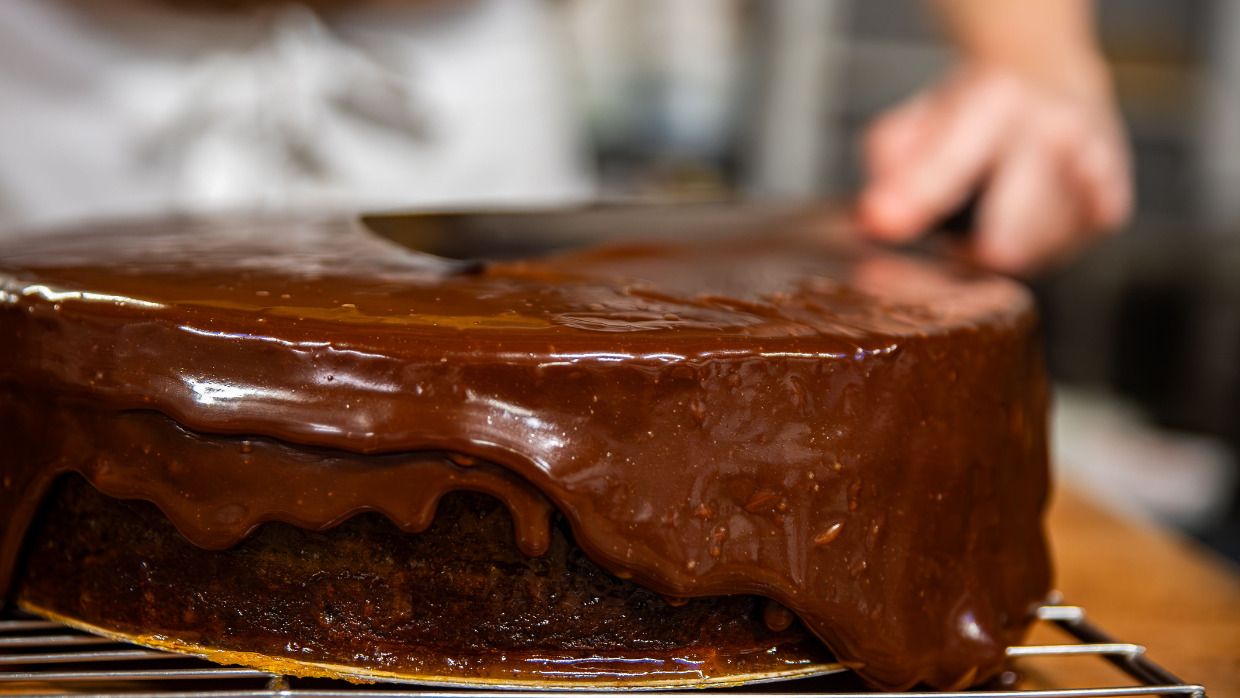Follow me back in time, to the court of Austrian Prince Klemens Wenzel von Metternich. The year is 1832, and the prince is expecting special guests. He needs a dessert that will knock these people off their feet. The problem: His pastry chef is sick. Enter sixteen-year old apprentice chef Franz Sacher. Sacher created a cake so sweet, so extra, and so full of chocolate that he not only brought honor to the prince, but also created the pride pearl of Austrian pastries. At least that is the origin story the Sacherhotel in Vienna still claims today. While I’m not saying that this is a complete fabrication, the truth, just like the famous cake, has layers.
Who was Franz Sacher? According to Gil Marks’ 2010 Encyclopedia of Jewish Food,
"In 1832, a Jewish apprentice baker in Vienna by the name of Franz Sacher -- at the time, many central European pastry bakers were Jewish -- created a dense, dry chocolate cake with a thin layer of apricot jam in the middle, the famous Sachertorte."
Sacher was Jewish. Or was he? Here’s where this little excursion into history becomes sticky, like the cake’s jam layer, if you will. His Jewish identity is wholly unmentioned on the website of his namesake hotel. Even in his newspaper feature of December 20th, 1906, in the Neues Wiener Tagblatt, which celebrates his life at the age of ninety, this detail goes unmentioned. Which begs the question why?
In my opinion, there are two likely scenarios. In the first one, Franz Sacher was never Jewish. He was an avid hunter, a very un-Jewish hobby. Sacher was buried in a Catholic cemetery. His obituary mentions many of his business accomplishments but no connection to the Jewish people. Also it has a big cross on top of it. In this case, author Gil Marks made a mistake.
The family name Sacher likely comes from the given name Zachariah and was used by some Jewish families in Europe when last names became a thing. British Jewish businessman Harry Sacher comes to mind. Another famous Jew with that name was Abram Sachar, the founding president of Brandeis University. Marks may have looked at the industry, in which Jews were represented, seen this last name and concluded that Franz Sacher was Jewish in error.
The second scenario, which I find more interesting, is that Franz Sacher was Jewish but converted to Catholicism to gain acceptance in Austrian society. He may have converted very young, or together with his father and family, as his father was already working as constable for the castle when Franz began his apprenticeship. It is also possible that an ancestor bearing the Sacher name was baptized.
Franz Sacher was born before the emancipation of the Austrian Jews in 1867. Before then Jews were tolerated in Austria which meant they didn’t have to wear yellow stars and pay enormous taxes anymore. At the same time though, the Austrian law upheld discrimination against Jews in housing, family matters, languages like Hebrew and Yiddish,and property. The worst legal discrimination was the “Jew Oath” which forced Jews to stand on the hide of a pig, bare their chest before the gentile court, and hold a Torah. The ruling Habsburg monarchy didn't execute their plan to expel the Jews of Austria but the sentiment remained.
Not every royal was antisemitic though. During the 1819 antisemtic Hep Hep riots in Germany, Prince Metternich, the Austrian chancellor, urged German authorities to reign in the violence. He is said to have frequented Jewish salons for business and pleasure. I think it's safe to say that Prince Metternich wouldn't have minded Jewish converts at his court.
Sacher did definitely work as a pastry chef for Metternich, but while we're on the subject of Metternich, I should debunk here that the Sachertorte was created at his court. Remember the 1906 article I mentioned earlier? Well, in this article Sacher explained that he came up with his chocolate cake in the 1840s while he was working as a chef for the court of then Pressburg, now Bratislava. Which means the official story is likely just a marketing gimmick. The reason this is interesting to me is that it shows Sacher's willingness to bend the truth to advance his career. The denial of his possible Jewish heritage would have followed the same rationale.
Franz Sacher was already a famous pastry artist when Jews received equal rights in Austria. And even with equal rights on paper, the gentile majority still saw Jews as “the other.” As history showed in the following century, whatever assimilation Austrian Jews engaged in wasn’t enough to save them from the horrors of the Nazis.
Like cacao, Jewish history is often bitter. In chapter 31 of his magnum opus the Tanya, Rabbi Schneur Zalman of Liadi explains that bitterness is different from sadness. Sadness can make a person unable to function, whereas bitterness has an inherent “vitality.” A bitter person will look at their shortcomings and circumstances and figure out a way to grow.
Bitterness can be transformed into something positive, just like bitter cacao can be transformed into chocolate when sugar is added. At the same time, exaggerating with sweetness can make a food inedible. Sachertorte is somewhere between these extremes. Semisweet to give joy to the soul without going overboard, and fancy for a Shabbat table fit for a king. Even if Franz Sacher wasn’t Jewish, his chocolate cake is very Jewish in essence.
To learn more about Jews in Austria in the 19th century click here. To learn to make this iconic dessert, click here.
















